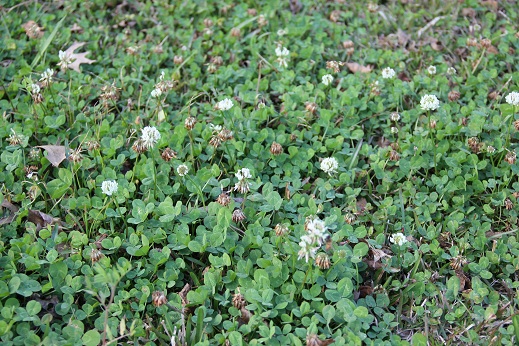WHITE CLOVERWhite clover is native to Europe and Asia and is now found throughout most of the United States. Clover does have some valuable uses. It is used to feed grazing animals in pastures. It gives a lush green look in winter with the added perk of flowers. It will also grow in areas with low nitrogen levels so there will not be bare ground showing. It has been used for erosion control. Unfortunately, it is not the type of plant most people want at their home. Here is how to kill the clover that is bothering you so much. HOW TO KILL CLOVER IN YOUR LAWNClover is a perennial weed that will also spread seeds nearby. This means that if clover is left untreated, it will not only come back every year, but also have new clover growing beside it. CULTURAL CONTROLS FOR CLOVER A lot of clover is usually a sign of low nitrogen in your yard. This does not mean you should go overboard and add nitrogen now. Wait until late spring to early summer to do that. Clover needs sunlight to grow. If you maintain proper mowing heights for your lawn throughout the year, clover is less likely to spread in your yard. CHEMICAL CONTROLS FOR CLOVER There is clover in your yard, how do you get rid of it? Once clover is established, it can be treated using selective herbicides. Selective herbicides will only kill the weeds the product is design to kill while leaving the rest of the plants healthy. APPLICATIONS The best time to treat clover would be either in spring or fall. Winter will work too, but starting in the fall would be best. Often it will take more than one application to get the clover amount to an acceptable level in your yard. If you broadcast the herbicide across your entire yard the first time, be sure to only spot spray the second. When dealing with selective herbicides, the amount of herbicide you use is very important. Too much and you have a dead yard, too little and the lawn was watered. Be sure to follow the label. PRE-EMERGENT HERBICIDE FOR CLOVER Pendimethalin Unlike most other pre-emergents, it does have some post-emergent control. This means you put it out and it prevents you from having a bigger clover problem next time. If only putting it out once a year, try to make it early spring so it will remain active when the clover drops its seeds. POST-EMERGENT HERBICIDE FOR CLOVER Three-way herbicides containing 2,4-D, dicamba, mecoprop (MCPP) Used on St. Augustine grass, Centipede grass, Zoysia grass and Bermudagrass. I personally find three way herbicides to work well on not only clover, but also many other broad leaf weeds. Some grasses have a lower recommended rate than others to reduce the chance of injury. Be sure to follow the instructions on the herbicide label. Atrazine This can be used on St. Augustine grass and Centipede grass. Be careful with this product as it can kill your lawn if used to often in a year. CAUTION Be sure to always follow the label's instructions for use when dealing with any pesticide. Be sure to wear the required protective equipment such as gloves, safety glasses etc. In the event of an injury, refer to the Material Safety Data Sheet for instructions on what to do. HOW TO GET RID OF CLOVER GROWING IN PAVEMENT AREASThis is a lot easier. Use roundup or herbicides with the active ingredient Glyphosate. If you have a recurring problem with clover in these areas, there are some great pre-emergent herbicides designed to keep bare areas weed free.
3 Comments
12/29/2022 09:06:30 pm
I really thank you for the valuable info on this great subject and look forward to more great posts. Thanks a lot for enjoying this beauty article with me. I am appreciating it very much! Looking forward to another great article. Good luck to the author! All the best!
Reply
Leave a Reply. |
AuthorCharlie Casselberry Categories
All
Archives
April 2024
|
Contact |
Services |
About |
Locations
|
GreenSeasons
|
Baton Rouge Office
11628 S Choctaw Drive, Suite 227 Baton Rouge, Louisiana 70815 |
Greenwell Springs Office
14461 Frenchtown Road Greenwell Springs, LA 70739 |
Slidell Office
56010 Highway 433 Slidell, Louisiana 70461 |
© 2020 GreenSeasons



 RSS Feed
RSS Feed
